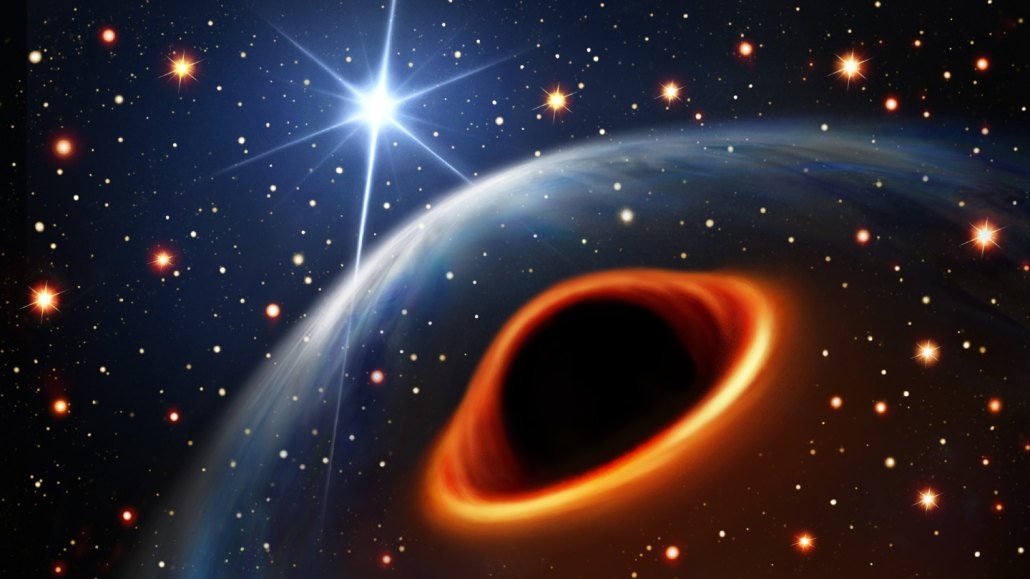Astronomers are puzzled over an enigmatic companion to a pulsar
The mysterious entity has a mass somewhere between that of a neutron star and a black hole

An unseen object orbiting a pulsar might be an exceptionally lightweight black hole (illustrated), a very heavy neutron star, or something else entirely.
Daniëlle Futselaar/artsource.nl